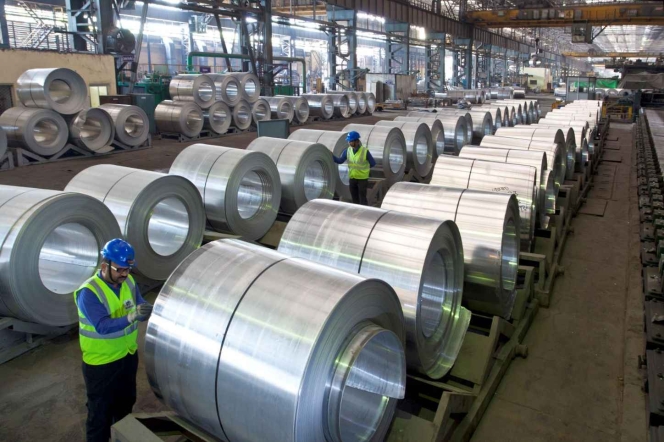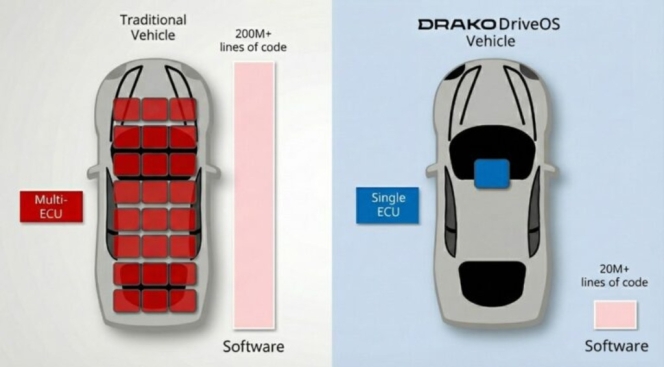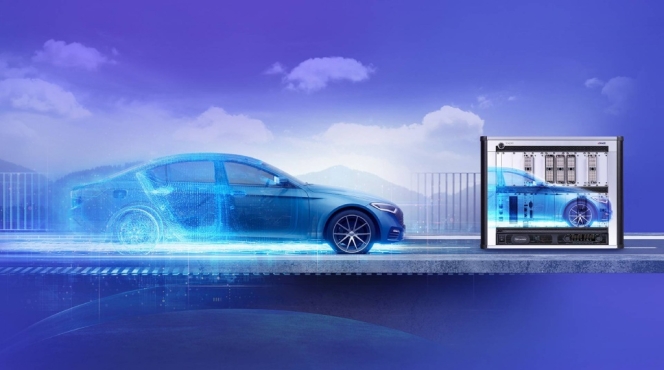Aluminium Can Play A Pivotal Role In The Changing Face Of The Automotive Sector
- By MT Bureau
- October 13, 2020


Currently, India’s foundry market for automotive components is small (only 10 percent of total foundry market — 10 million of cast iron + aluminium) in comparison to USA’s foundry market, which is at 14 million tonnes per annum, of which 3.3 million is aluminium (24 percent). With an increasing focus on higher performance with better safety and lower emission, this gap is going to shrink in the coming years, anticipates Ajay Kapur, CEO – Aluminium & Power Business, Vedanta Aluminium.
“There is immense scope for Indian aluminium producers to tap into the emerging market in the automotive sector,” said Kapur. Vedanta Aluminium was the first in India to supply PFA (primary foundry alloy) to the domestic auto sector. Before, the launch of PFA by the company, India’s entire PFA demand was being met through imports, even though the country has the world’s second-largest aluminium production capacity. Looking at the potential of the auto market and its import dependency, the company decided to tap into the opportunity and develop indigenous capabilities at its state-of-the-art facilities in Jharsuguda and BALCO to meet that demand. Currently, the company has a PFA casting capacity of 240KT spread across its plants in Odisha and Chhattisgarh.
“Primary aluminium producers develop PFAs which are customised to suit the exact needs of automakers in terms of performance, strength, durability, etc. Significant R&D and technical expertise go into developing PFAs, resulting in excellent metal quality and outstanding castability, which makes these alloys the preferred choice for the automotive industry,” explained Kapur. PFAs are ideal for aluminium alloy wheels, cylinder heads and brakes. The company also anticipates that with an increased focus on reduction of vehicle weight with higher safety performance, automotive parts critical to safety will be made from PFA instead of cast iron to offer higher strength and nearly double absorption of crash energy. “Besides, aluminium PFAs will always have the added advantage of cost-saving on fuel and maintenance,” added Kapur.
Vedanta Aluminium has started steadily supplying PFAs to OEMs and ancillaries in wheel manufacturing in India. “Our proactive move to expand business on this front helped us on-board some of the most reputed equipment manufacturers and auto ancillaries as our clients, and we have received a very positive response from them. Encouraged by that, we will soon look to expand our alloy portfolio for supporting manufacturing of cylinder heads, ABS brakes and certain key applications where traditional materials can easily get substituted with aluminium alloy. We are also exploring prospects of long-term investments by auto ancillaries near our aluminium smelters so that they may leverage cost savings in terms of freight, re-melting and electricity,” said Kapur.

The company, according to him, is well-positioned to cater to the current and emerging needs of the Indian auto sector, offering a broad range of products that find usage across the automotive value chain – from casting to extrusion. “When choosing suppliers for alloys, automotive players should look for companies having high-quality casting facilities, sophisticated R&D facilities and technological prowess for developing customised high-performance alloys for their specific needs, and finally, having robust after-sales technical support; USPs that have earned us the trust of our clients,” he added.
Aluminium is the second most used metal in the world after steel, today, and, according to Kapur, it has the potential to become the most important commercial metal in the future. “Most developed countries have already designated aluminium as a core industry. Aluminium holds strategic importance for the economy as the metal of choice for all kinds of transportation, power, aerospace, defence, building and construction needs. So, given the role it plays in supporting the core sectors meet the Government’s ‘Make in India’ initiative, we expect its application to only expand with time,” said Kapur.
The metal’s usage in the transportation sector has been rapidly increasing as it offers an environment-friendly and cost-effective way to increase performance, boost fuel economy and reduce emissions while maintaining or improving safety and durability. Aluminium is substantially lighter than its counterparts, offering a significant reduction in weight, which has a direct impact on fuel consumption and carbon emissions.

The metal also has a higher strength-to-weight ratio compared to traditional materials that enable it to absorb twice the crash energy of mild steel, ensuring that vehicular performance enhancements do not come at the cost of safety. “Further, nearly 90 percent of all the aluminium used in a vehicle is recycled at the end of its lifecycle. The energy required to recycle aluminium is only five percent of the energy required to produce the metal. With all these advantages, aluminium can play a pivotal role in the changing face of the automotive sector,” said Kapur.

Aluminium alloys are used by the Indian auto industry majorly as alloy wheels. Around 95 percent of two-wheelers include aluminium, averaging at 7kg per bike, taking total consumption of aluminium alloy in this segment to 115KTPA (kilo tons per annum). Whereas, only 20 percent of four-wheelers use aluminium, majorly in high-end models, which max out at 40kg per car. “The crux of the matter is, in India, we are yet to explore more applications of aluminium in the automotive industry akin to our global peers. For example, in developed countries, around 21 PFAs are used in the automotive segment to achieve light-weighting in the form of various auto parts and components. In India, we majorly use PFAs only for manufacturing alloy wheels and to some extent, for cylinder heads. So, there is immense potential for usage of aluminium in other auto parts like engine, suspension, front end carrier, instrument panel support, rear frame, chassis and many more,” said Kapur.
Shortly, the company expands its alloy portfolio for supporting manufacturing of cylinder heads, ABS brakes and certain other applications where currently steel or iron is being used but can be substituted by suitable aluminium alloys to provide additional benefits. As the market for aluminium alloys in automotive segment expands with inclusion of newer applications, Vedanta Aluminium will look for opportunities to leverage its technological expertise and R&D capabilities to develop products customised to the needs of the market. Vedanta Aluminium is also open to collaborating with the downstream industry, to unlock the entire potential of aluminium used in the auto sector and cater to the rapidly evolving aluminium requirements of the Indian automotive industry.
In the Indian automotive market, one of the biggest challenges faced today is the increasing imports of auto components from China and other countries. The size of the auto components imports was USD 17.6 billion in FY19. Asia, the largest source of imports for Indian auto-components, had a share of 61 percent followed by Europe at 29 percent; North America at eight percent; Latin America and Africa at one percent each in FY19. China, with 27 percent, enjoyed the status of the largest exporter in the Indian automotive market.
“The potential of the aluminium industry should be acknowledged and recognised as a core sector with a National Aluminium Policy that will encourage, protect and boost the domestic aluminium industry. The domestic capability needs to be harnessed for critical sectors of national importance like defence, aerospace, aviation, transportation, infrastructure, electrification, housing, etc. We must make the vision of ‘Make in India’ a ground reality in these sectors, leveraging the potential of the entire aluminium value chain, from mining to end usage. Besides enhancing domestic capacity and reducing import dependency and subsequently trade deficit, it will also generate huge employment opportunities in our country which has a deep talent pool that needs to be capitalised for the realisation of our vision of a USD5 trillion economy. We are on the right path, but there is still a long way to go,” said Kapur.

The global economy is swiftly moving towards a cleaner, greener and more sustainable lifestyle. For more than a decade now, concerns about fuel efficiency have encouraged OEMs to replace steel with aluminium in vehicle bodies, doors, trunks, hoods, bumpers, crash boxes, brakes and wheels. With the advent of electric vehicles (EV), OEMs worldwide are focusing on exploring and applying new uses of aluminium. The need for lightweight battery casings and heat exchangers in electric vehicles, combined with autonomous vehicles’ demands for high visibility and structural integrity, is expected to exponentially increase the use of aluminium in cars, trucks and buses from now on. “Using aluminium in EVs has several advantages, foremost amongst which is the distance travelled per charge. Lighter the vehicle, the longer its range. Coming to better battery life, thanks to the metal’s thermal and anticorrosion properties, aluminium is ideal for battery frames. Demand for aluminium will also rise on account of infrastructure for serving EVs since the metal is commonly used as a housing material for EVs charging stations as well. While India is waking up to this future of automobiles, partnerships between different automotive industry bodies/institutions and auto companies for sharing knowledge and expertise will help fast-track development of electric vehicles in the country,” said Kapur. MT
Drako Tech Unveils DriveOS With Single-ECUArchitecture
- By MT Bureau
- December 17, 2025

California-based Drako Tech has announced DriveOS with HyperSafety, an automotive operating system designed for single-Electronic Control Unit (ECU) operation. The platform consolidates vehicle subsystems, including control systems, ADAS and digital cockpit, into one unit to reduce costs and enable over-the-air (OTA) updates.
Launched in 2015 and utilised in Drako GTE and Drako Dragon vehicles, DriveOS supports internal combustion, electric and hybrid propulsion systems.
The HyperSafety system provides real-time performance via a single-ECU architecture. According to Drako Tech, the networking backbone facilitates communication four times faster than multi-ECU Time-Sensitive Networking (TSN) automotive Ethernet.
The architecture employs hardware isolation and redundancy to maintain operation during component failures. By using a reduced code footprint and hardware partitioning, the platform aims to limit attack surfaces for cyber security and streamline validation processes.
Industry Integration
Drako Tech provides development environments that run natively on DriveOS:
- Control Systems: Allows engineers to build vehicle controls from Simulink models.
- Digital Cockpit: A system for instrument clusters, navigation and multimedia.
- ADAS: A software foundation for driver assistance with low-latency control.
The platform addresses the complexity of multi-ECU architectures, which typically require separate units for functions such as seats, doors and thermal management. Drako Tech uses a separation kernel to run safety-critical systems alongside non-critical systems, such as infotainment, on the same ECU.
DriveOS introduces hard real-time capabilities to Linux without requiring kernel changes. This allows developers to use Linux libraries and tools for safety-critical systems.
Key features include:
- Performance: 108-microsecond end-to-end performance compared to 514 microseconds for TSN Ethernet.
- Consolidation: The ability to move functions onto a single PC architecture to reduce hardware mass and complexity.
- Redundancy: Hardware-backed isolation ensures faults in one subsystem do not affect driving functions.
- Cloud Integration: Real-time fleet management and diagnostics without creating access paths to control systems.
Dean Drako, CEO, Drako Tech, said, “Nearly half of the cost of new vehicles is tied up in software and electronics. Drako Tech now offers all OEMs worldwide – regardless of size or influence – a definitive leap in their ability to deliver exceptionally safe, connected, AI-enhanced vehicles, with massive cost advantages. We are the first to achieve the ultimate goal – a single-ECU, hard real-time operating system and unified electronics architecture with mixed criticality – while providing OEMs a flexible deployment path.”
dSPACE To Present AI-Driven Test Solutions For SDV At CES 2026
- By MT Bureau
- December 17, 2025

German technology company dSPACE is set to showcase end-to-end test solutions at CES 2026 to assist vehicle manufacturers with the development of software-defined vehicles (SDV).
The company will present a validation portfolio featuring AI-supported software-in-the-loop (SIL) and hardware-in-the-loop (HIL) solutions.
It is exploring how generative and agentic AI technologies can support SIL testing and enable CI/CD pipelines for validation. An exhibit will demonstrate a Visual Studio Code and GitHub Copilot solution for the generation of virtual ECUs for SIL tests.
To meet the requirements of short-cycle development, dSPACE is demonstrating a CI/CT concept presenting a cloud-native validation approach. This includes a GitLab pipeline integrated with VEOS, the dSPACE SIL test software, and SCALEXIO, the HIL test platform.
dSPACE is also presenting a HIL Farm Management Demo designed to increase test efficiency. This displays the availability and utilisation of HIL systems and potential errors to reduce system downtimes and improve the use of test resources.
The technology company will use its test solutions for battery charging and battery management systems to demonstrate end-to-end SIL/HIL validation. Efficiency is increased by reusing test cases, simulation models, bus configurations and user interfaces across both methods. This allows for the demonstration of functions, including conformance tests, with the same layouts and cases.
The company is introducing DARTS ARROW, a radar solution for functional testing of sensors. Developed for end-of-line tests and periodic technical inspections, it validates safety systems such as emergency braking and lane departure warnings by simulating traffic scenarios to detect sensor errors.
For security, dSPACE will present HydraVision, a cybersecurity test framework. Using test case templates, it allows for the integration of cybersecurity tests into the development process to identify and mitigate weak points.
Additionally, the new SCALEXIO Essential system expands the SCALEXIO real-time platform. It is designed for the validation of edge ECUs for mechatronic applications in the automotive, agricultural, and construction machinery sectors. The system includes a software package and is intended as a cost-efficient entry point for HIL testing.
Greaves Cotton Appoints Santosh Singh As Chief Strategy And AI Officer
- By MT Bureau
- December 16, 2025

Greaves Cotton has appointed Santosh Singh as Chief Strategy and AI Officer. He will be based in Mumbai and will lead strategy, transformation, AI-led enterprise capability building and business excellence for the Greaves Cotton Group.
Singh comes with over two decades of experience in strategy, business excellence, innovation, and AI-led enterprise transformation. He joins Greaves Cotton from Tata Technologies (TTL), where he served as Global Head – Marketing and Business Excellence. During his tenure there, he co-led the enterprise GenAI roadmap and developed use cases focused on customer engagement and productivity.
His primary mandate is to drive the Greaves.NEXT strategy, the company’s roadmap for growth across the energy, mobility and industrial solutions sectors.
In his new role, Singh will focus on accelerating growth for Greaves Technologies (GTL), developing an enterprise-wide AI roadmap, and establishing partnerships with hyperscalers and AI labs.
Parag Satpute, Managing Director & Group CEO, Greaves Cotton, said, “We are pleased to welcome Santosh to the leadership team. His extensive expertise in strategy, digital transformation, and AI will play a significant role in shaping Greaves’ next phase of growth. His global experience will further strengthen our innovation roadmap and support our long-term business priorities.”
Singh will also work across business units to incubate and scale growth vectors and lead business excellence initiatives.
Luminar Sells Photonics Division To Quantum Computing Inc For $110 Million
- By MT Bureau
- December 16, 2025

Luminar Technologies, Inc., a global technology company advancing safety, security and autonomy across various sectors, has announced it has agreed to sell its wholly owned subsidiary, Luminar Semiconductor, Inc. (LSI), to Quantum Computing Inc. (QCi) for USD 110 million in an all-cash transaction.
QCi is an integrated photonics and quantum optics technology company focused on photonics-driven technologies and sensing applications. LSI's innovation platform and engineering depth align with QCi’s strategic priorities in optical systems, chip-scale innovation and photonic architectures. The acquisition is expected to position LSI to grow and capitalise on the demand for photonics solutions.
Paul Ricci, CEO, Luminar, said, "We are pleased to partner with QCi as they continue to accelerate their photonics roadmap. QCi’s focus on photonics-driven technologies provides an aligned platform for LSI to expand its customer base, accelerate growth opportunities, and invest in markets where long-term demand for high-reliability optical systems is increasing. We are incredibly proud of the LSI team for the progress they have made to reach this milestone, and we are excited for the opportunities ahead for LSI under QCi’s ownership.”
Yuping Huang, CEO, Quantum Computing Inc, said, "I’m excited about the opportunity to partner with the exceptional team and valued customers of LSI. There is clear strategic alignment and shared vision between our organizations, creating strong momentum from day one. Following the closing, we will move quickly to invest in and scale LSI’s existing business, while bringing our teams together to accelerate our quantum photonics roadmap. This is a powerful combination, and I’m energized by what we will achieve together.”
In a separate announcement, Luminar announced that it has initiated voluntary chapter 11 cases in the U.S. Bankruptcy Court for the Southern District of Texas. LSI is not a debtor in the chapter 11 cases and is operating in the ordinary course. Because LSI is a subsidiary of Luminar, the transaction will require the approval of the bankruptcy court via a Section 363 sale process, which the parties expect to receive by the end of January 2026, subject to closing conditions.






Comments (0)
ADD COMMENT